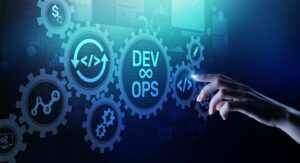Software robots could be configured with intelligent data capture tools to scan purchase orders for critical information, enter it into the appropriate system, and initiate an approval request. Robotics Process Automation (RPA) in finance and accounting is swiftly changing day-to-day operations, in some cases, faster than any other technology. Find out how to streamline your finance function, reduce costs, and unlock new opportunities for growth — all through a single, unified intelligent automation platform.

Over half of accounting firms worldwide have implemented RPA in their operations, and that’s expected to rise to over three-quarters within the next year or so. Robotic process automation is often mistaken for artificial intelligence (AI), but the two are distinctly different. AI combines cognitive automation, machine learning (ML), natural language processing (NLP), reasoning, hypothesis generation and analysis.
Drive stronger performance on your mission-critical priorities.
Automation is nothing new, but the term RPA in particular has some accountants worried. As with invoice processing, OCR can help read paper documents, and machine learning can help map data from the documents into the system of record. For example, Dean worked on one project for a brewer that wanted to automate PO creation within their SAP implementation. An RPA bot received input in two different formats, validated the completeness of the data input, then set up the PO shopping cart in SAP and submitted a request for its approval.

Intelligent process automation demands more than the simple rule-based systems of RPA. You can think of RPA as “doing” tasks, while AI and ML encompass more of the “thinking” and “learning,” respectively. It trains algorithms using data so that the software can perform tasks in a quicker, more efficient way.
RPA Services in the Accounting Industry: How Are Accounting Firms Using Automation?
Thanks to the popular myth of RPA inefficiency in dealing with unstructured data and non-structured invoices. Account Payable is a critical part of the day-to-day functions of any financial institution. However, being repetitive and time-consuming, AP is the perfect candidate for RPA automation. According to a report by Gartner, human error with finance functions produce about 25,000 hours of rework which costs about $878,000 per year. It encompasses a range of applications tailored to meet specific needs, from automating the audit of financial statements to accelerating the completion of tasks in accounts receivable and payable.

RPA bots are able to extract the correct data using optical character recognition (OCR) and machine learning capabilities, and relay that information to the correct end destinations. RPA can automate this entire process, reducing manual invoice hand-offs, and leaving only the rare outlier for human inspection. Robotic process automation (RPA) is a productivity tool that allows users to configure scripts or “bots” that imitate selected tasks within a process.
RPA Is Transforming Accounting
That’s not the case with RPA bots; they run according to established rules, deliver higher quality, and substantiate financial success. However, this hurdle can be easily overcome if you implement RPA in accounts payable operations with Natural Language Processing and other AI tools & ML technologies. Additionally, we will discuss real-world RPA use cases and shed light on the evolving role of RPA in shaping the future of finance and accounting practices.
- According to Gartner research, human error within the finance function produces, on average, 25,000 hours of avoidable rework at a cost of $878,000.
- Additionally, there is a high margin for error if a single record is entered incorrectly, affecting payment.
- In this eBook we give 8 concrete examples of successful implementations where automation has been used to radically improve the efficiency and effectiveness of internal controls.
- ML helps by analyzing variances to infer why they may have happened and to flag any instances of potential fraud.
- This function not only handles your company’s cashflow and financial assets, but also ensures it has sufficient liquidity to meet its financial obligations.
Next, list all the repetitive, manual & high-volume functions based on their complexity. RPA offers brilliant financial automation solutions that can work straight out of the box and start providing ROI almost immediately. Gone are when businesses had to bear high labour costs when demand/workload spikes. In today’s rpa use cases in accounting time, with insightful guidance and a reliable RPA service provider, you can automate F&A processes in a few weeks. Since the traditional process is repetitive, rules-based, and requires consistency and accuracy, RPA offers you various benefits, such as billing your customers faster and more efficiently.
Automatable areas of accounting and finance
And by automating tasks such as invoicing, credit checks and more, your team can focus on understanding the bigger picture. With less stress caused by completing mundane tasks, complex decisions that require imagination will flow freely, benefiting your business. In June 2021, 20% of organisations across all sectors had adopted RPA, increasing from 13% in 2020. By demystifying misconceptions around the technology, finance leaders can really reap the long-term rewards, while retaining and attracting future talent – rather than holding teams back by refusing to change. For years, organizations have been trying to find financial improvements through enterprise systems, reporting tools and stopgap measures that attempted to eliminate repetitive manual actions.
If a new customer is approved, the bot can also populate the CRM or customer profile with all pertinent information. It is critical to provide accurate information to decision-makers, and this information flow requires precise and detailed reporting. Additionally, RPA can easily reconcile purchasing orders and invoices https://www.globalcloudteam.com/ to ensure that everything is in order. While crucial, comparing account balances across systems can be a time-consuming function. In addition, industries such as manufacturing have already seen the success of RPA implementation by streamlining the assembly of everything from automobiles to small cellular components.
Data Migration for Nonprofits: Optimizing Impact
Otherwise, businesses become stuck with patchwork solutions that don’t integrate together as well as they should. A unified approach based on the concepts of intelligent automation not only leverages RPA when it can provide value, but also brings in other critical tools, including AI, machine learning, OCR, and more. With AI, software robots can emulate aspects of human decision making to streamline a wider range of financial and accounting processes. Improve invoice processing accuracy by using automation combined with AI (UiPath Document Understanding) to reengineer workflows, digitizing invoice collection, validation, and storage. Our robots extract, interpret, and process data for you, even from PDFs, images, handwriting, and scans, reducing turnaround times and freeing up time spent on highly manual tasks.
By “minding the gaps” in your automation with the use of advanced tools such as Kofax RPA, you can nurture a better means of doing business. Transform paperwork into robot work, and watch how customer, partner, and employee experiences improve. Sixty-four percent of CFOs believe autonomous finance can become a reality within the next six years. Still, adoption of new digital technologies and cloud remains a challenging feat. 6 min read – IBM Power is designed for AI and advanced workloads so that enterprises can inference and deploy AI algorithms on sensitive data on Power systems.
How Gartner helps with Finance Robotics & Automation
As RPA transforms processes digitally, it also changes the roles that used to handle the given tasks. And, when these are the processes (as it often is with accounting and finance) where human errors can be extraordinarily expensive for the company, consider RPA as a must. People have to access and collect data and handle data reconciliation through several systems, where employees have to verify and update information multiple times and in various systems. As a matter of fact, a poll by Deloitte reported that 52.8% of professionals plan digital improvements through automation. The top priority for these efforts is using RPA in finance and accounting processes. A PWC Future of Finance report asked CFOs how could finance and accounting processes be best improved in their organizations.


